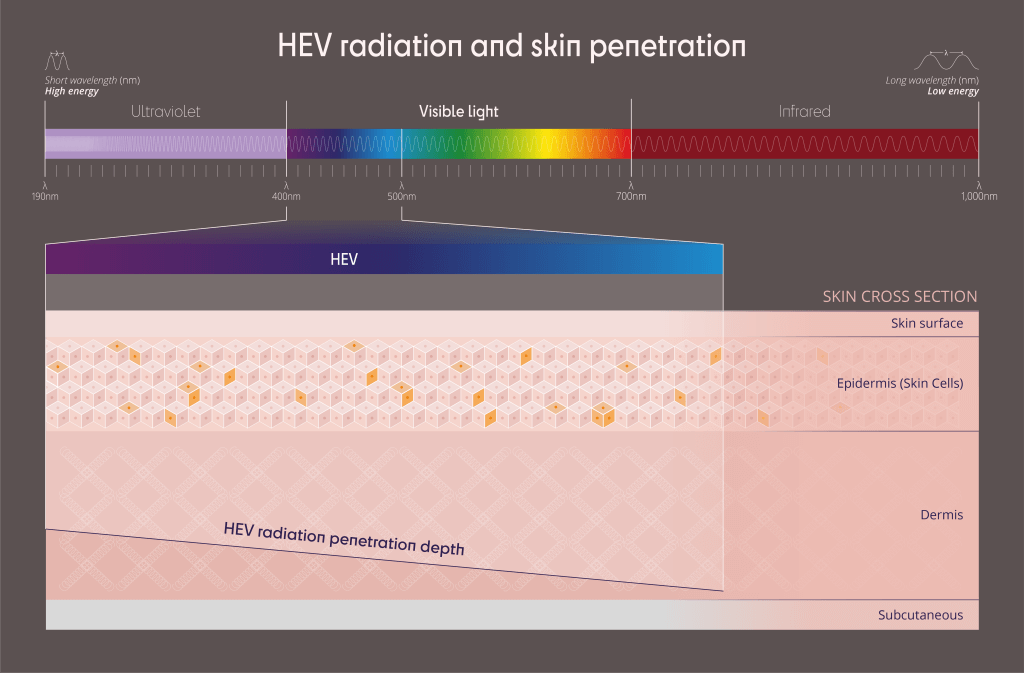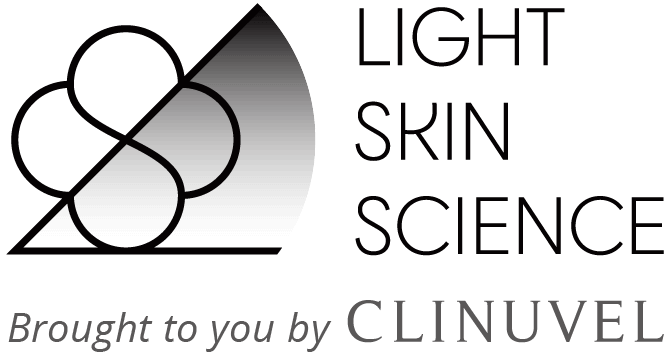Light is electromagnetic radiation, and it travels in waves. The length of those waves and the distance between each peak determines how we categorise light, but also where and how it can interact with the environment. Wavelengths (measured in nanometres or nm) are important when we talk about the effects of light on human skin.
Note: The shorter the wavelength, the more energetic it is, readily reacting with anything it encounters.
Until recently, the research surrounding the impact of solar radiation on human health has been focussed on Ultraviolet (UV) light, which travels between 290-400nm.
The next portion of the solar spectrum is Visible Light (VL), which travels in wavelengths between 400-700nm.
Despite comprising nearly half of the solar radiation reaching the earth’s surface, VL has only recently become the subject of investigation, with researchers initially believing it to be relatively harmless to human health.

If we look at the beginning of the VL portion of radiation on this diagram, we can see that the peaks of each wavelength are closer together, meaning that they share similar energetic properties to those of UV radiation. With this being the case, research has started to look more closely at the aptly named, High Energy Visible (HEV) light, also known as ‘blue-light,’ to see if it also interacts with human skin in a similar way to UV.
Research found that not only does HEV light penetrate our skin, but it also does so to a deeper level than even UVA radiation. Studies now focus on the damage HEV light is causing human skin, and while there is no current evidence that it can be linked to cancer like UV radiation, there is no doubt that it contributes to hyperpigmentation and photoageing.
The Biological Effect of HEV Light on Human Skin
Oxidative Stress and DNA Damage
Like UV radiation, the effects of HEV light on human skin are largely caused by the generation of Reactive Oxygen Species (ROS). ROS is a molecule which is ordinarily beneficial, supporting cell viability and cellular processes. However, an excess of ROS causes oxidative stress (an imbalance between ROS and antioxidants in the body). Oxidative stress can, in turn, lead to DNA damage, erythema (redness of the skin caused by inflammation), and a loss of cell viability.
These reactions influence how our skin functions and also how it appears, contributing to premature signs of ageing.
Photoprotection
These findings make the need for efficient photoprotection even more necessary. Current photoprotective skincare products are created to shield us from UV radiation, which is vital for our health but does not address the need for protection from HEV light. Interestingly, the oxidative stress caused by HEV light cannot be blocked by conventional sunscreens, so we need to make sure we’re taking further measures to protect ourselves. Practice well-rounded sun safety by covering up, staying in the shade, and limiting your exposure to solar radiation as much as possible.


